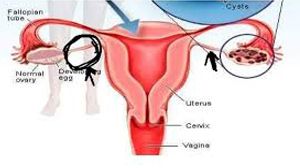Sling Surgery for Incontinence: An Effective Treatment Option for Improved Quality of Life
Add to
Share
1,624 views
Report
2 years ago
Description
Sling surgery is a minimally invasive surgical technique used to treat urinary incontinence in women. This type of incontinence occurs when the pelvic muscles are weakened or damaged, causing involuntary urine leakage. Sling surgery involves placing a synthetic mesh sling underneath the urethra to provide support and improve its ability to hold urine. This procedure is performed under local anesthesia and has a high success rate, with many patients experiencing significant improvement in their quality of life. This comprehensive guide provides detailed information about sling surgery for incontinence, including the benefits, risks, and recovery process. It is a valuable resource for women suffering from urinary incontinence and their healthcare providers. Sling surgery is a minimally invasive procedure used to treat stress urinary incontinence, a common condition where leakage of urine occurs due to weakened pelvic muscles. This type of incontinence is often seen in women who have undergone childbirth, and in elderly patients, but can occur in people of all ages and genders. The sling surgery involves placing a synthetic mesh sling under the urethra to provide additional support and prevent urine leakage. The sling acts like a hammock to lift the urethra and help it stay closed when pressure is applied, such as during coughing or sneezing. This surgical procedure has a high success rate and offers many benefits to patients suffering from stress urinary incontinence. It is a relatively quick and safe procedure that can be performed on an outpatient basis, with minimal pain and discomfort. Recovery time is typically short, with most patients able to return to normal activities within a few days. This comprehensive guide to sling surgery for incontinence offers insights into the condition, pre-operative preparation, surgical techniques, and post-operative care. It provides patients and their families with a clear understanding of the procedure and its expected outcomes. With this guide, patients can make an informed decision about whether sling surgery is the right option for them and can approach the procedure with confidence, knowing what to expect before, during, and after the surgery. Urinary incontinence is a common condition that affects people of all ages and genders. It is often caused by weakened pelvic floor muscles, nerve damage, or an underlying medical condition. Sling surgery is a minimally invasive procedure that can effectively treat urinary incontinence by providing support to the bladder or urethra. This comprehensive guide provides an in-depth overview of sling surgery for incontinence, including the different types of slings, the surgical procedure, and the recovery process. It also discusses the benefits and potential risks associated with the surgery, as well as alternative treatment options for those who may not be candidates for sling surgery. Through this guide, patients and healthcare providers can gain a better understanding of sling surgery for incontinence and its potential to improve the quality of life for those living with this condition.
Similar Videos






